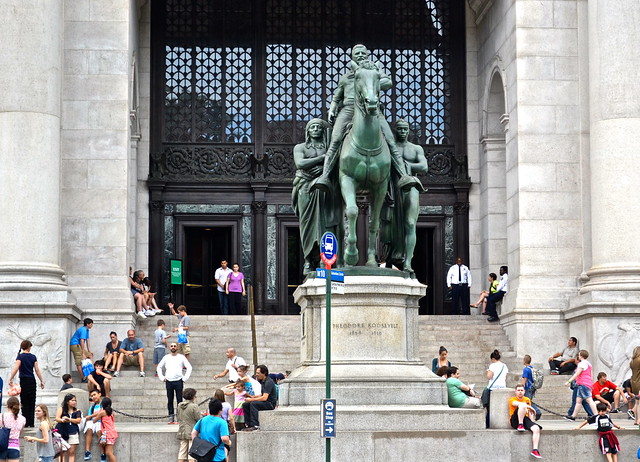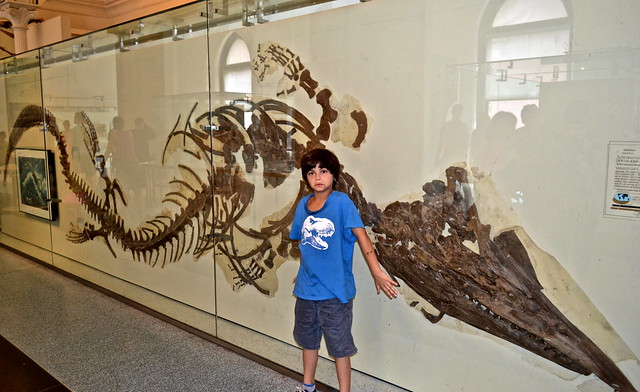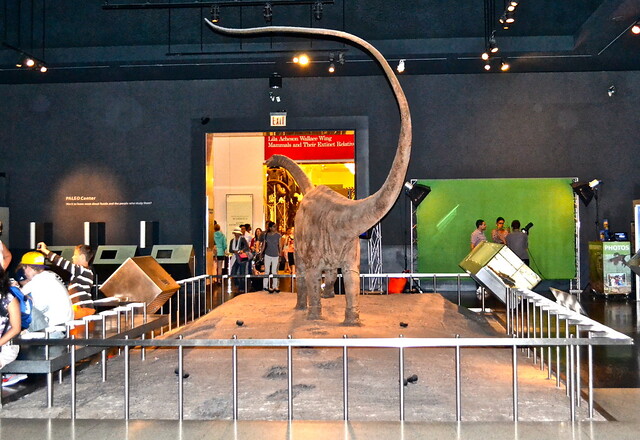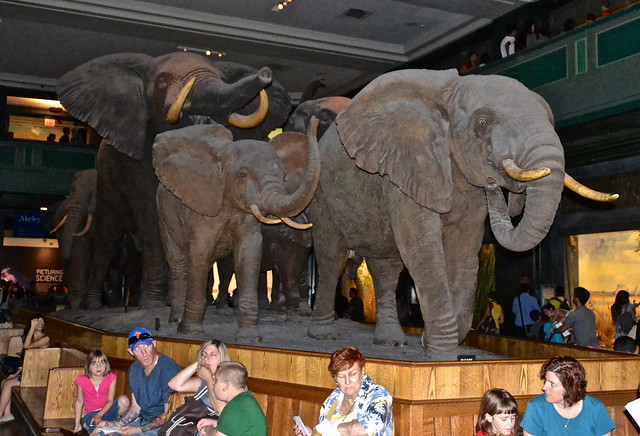Telling young kids that you were going to take them to a museum was almost the same as telling them you were about to go to the dentist. However, when you throw in words like dinosaurs, whales, meteors, and other cool stuff their bodies start tingling, and they WANT to go! That’s how I end up taking my kids to this amazing museum, and here’s my full experience at the American Museum of Natural History in New York.

Related Read: Things to do in NYC
American Museum of Natural History in New York
With over 80 museums in NYC, how do you know which were the best? So if you don’t have a lot of time to visit a museum in NYC, one museum needs to be on your itinerary and that would be the American Museum of Natural History!
The AMNH, have it all:
- Dinosaurs – it’s kind of a no-brainer when you ask your kids if they want to see dinosaurs and dinosaur bones. This is one of the best museums for these types of exhibits.
- History of the United States – with life-like exhibits of easy-to-understand displays, kids can learn all about the Native Americans and the history of the United States.
- Animals – one of the greatest displays of animals throughout the world.
- Underwater exhibit – an entire area of the museum is devoted to understanding and diving into the world of underwater.
- And so much more…
Suggested Price
Even though the suggested entrance price is $19. That’s exactly what it is – Suggested. You actually can pay what you can. So if you’re on a big budget, you can visit most museums in NYC and set your own price tag.

Recommended Read: Museum for kids in NYC
Fun Facts about Museum of Natural History
-
The museum was founded in 1869
-
The mission was to discover, interpret, and disseminate information about human cultures, the natural world, and the universe.
-
Albert Smith Bickmore proposed to create a natural history museum in New York City, winning the support of William E. Dodge, Jr., Theodore Roosevelt, Sr., Joseph Choate, and J. Pierpont Morgan.
-
The Central Park Arsenal was the Museum’s original home on the eastern side of Central Park. But it was quickly outgrown.
-
1877 – The first building opens with U.S. President Rutherford B. Hayes presiding at a public ceremony.
-
1880 to 1930 – The golden age of exploration. During this time, the Museum is involved with expeditions that discovered the North Pole; explore unmapped areas of Siberia; traverse Outer Mongolia and the great Gobi; and penetrate the densest jungles of the Congo.
-
1936 – Theodore Roosevelt Memorial Hall and Theodore Roosevelt Rotunda open.
-
1967 The Museum’s exterior is designated an official New York City Landmark.
-
1991 A five-story-high Barosaurus cast is installed in the Theodore Roosevelt Rotunda, becoming the world’s highest freestanding dinosaur display.

-
June 2004 – The Museum installs a new Earthquake Monitoring Station in the Gottesman Hall of Planet Earth. The seismograph records and illustrates real-time seismic data for the public via a global network of seismic stations accessible in real-time to the Museum and other similar institutions.
-
2005 – The Museum marks the 70th Anniversary of the opening of the original Hayden Planetarium.
-
Now it is one of the largest museums in the world.
-
The museum complex contains 27 interconnected buildings housing 45 permanent exhibition halls, in addition to a planetarium and a library.
-
The museum collections contain over 32 million specimens
-
Many of the fossils on display represent unique and historic pieces that were collected during the Museum’s golden era of worldwide expeditions (the 1880s to 1930s).
-
From its founding, the Library of the American Museum of Natural History has grown into one of the world’s great natural history collections.
-
The Willamette Meteorite, located at the American Museum of Natural History, is the largest meteorite on display in a museum. It weighs 15 tons.
-
Permanent exhibitions include a fantastic Fossil Hall, home to the world’s largest collection of vertebrate fossils – nearly 1 million specimens in all.
-
The Hayden Planetarium, one of the world’s largest, forms part of the museum; it has a 10,000-volume library on astronomy and a 75-foot- (23-meters) diameter Sky Theater.
Information for American Museum of Natural History
Phone: 212-769-5100
Address: Central Park West at 79th Street, New York, NY 10024-5192
Hours: Open daily from 10 am – 5:45 pm – except on Thanksgiving and Christmas
Price:
General Admission – admission to all 45 Museum halls & the Rose Center for Earth & Space – $19
General Admission Plus One – includes admission to the Museum and Rose Center for Earth and Space plus one special exhibition, IMAX film, or Hayden Planetarium Space Show – $25
SuperSaver Admission – includes admission to the Museum and Rose Center for Earth and Space plus all special exhibitions, IMAX films, and the Hayden Planetarium Space Show – $33

How to Buy Tickets
You can buy it when you get to the museum.
The most efficient way to go is buying the New York Pass which allows you access to many attractions, not only museums. Plus, saves you tons of money!
American Museum of Natural History in New York
The post American Museum of Natural History: Facts and Useful Information appeared first on Travel Experta - Travel, Lifestyle, Freedom.
------------------------------------------
By: Marina 'Travel Experta'
Title: American Museum of Natural History: Facts and Useful Information
Sourced From: travelexperta.com/american-museum-of-natural-history-new-york/
Published Date: Sat, 11 Feb 2023 11:00:01 +0000
Did you miss our previous article...
https://consumernewsnetwork.com/travel-news/how-to-choose-the-perfect-cabernet-sauvignon






